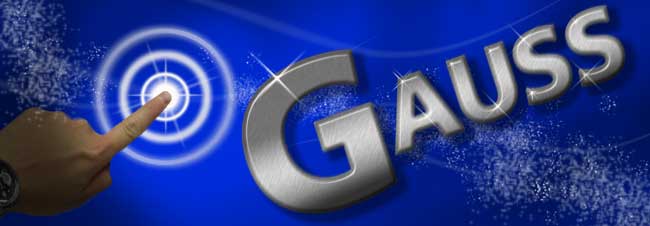Few principles are as old and at the same time as new as magnetism, and few scientists are as central to the role of magnetism in electronics as Carl Friedrich Gauss, who lived from 1777 to 1855, at the very time that that role was being crystalized. Magnets had been known from ancient times, but from 1820 on, discoveries were made by now-well-known physicists Oersted, Ampere, Gauss, Faraday, Maxwell, Einstein, and others that advanced both magnetism and electronics.

I like the way Wikipedia describes the relationship of these physicists and the science they discovered; it’s a virtual Who’s Who of the electronics world [click this link for a handy chart of units of measure and links to biographies of the scientists for whom they are named]: “In physics, Gauss's law, also known as Gauss's flux theorem, is a law relating to the distribution of electric charge to the resulting electric field. The law was formulated by Carl Friedrich Gauss in 1835, but was not published until 1867. It is one of the four Maxwell's equations which form the basis of classical electrodynamics, the other three being Gauss's law for magnetism, Faraday's law of induction, and Ampère's law with Maxwell's correction. Gauss's law can be used to derive Coulomb's law, and vice versa.”
Wikipedia also points out that “the terms ‘flux,’ ‘current,’ ‘flux density,’ and ‘current density’ can sometimes be used interchangeably.” All the terms relate to “flow,” and in the case of electricity – and magnetism – the flow of electrons, which is the definition of current.
Gauss is credited with helping to construct, in 1833, the first electromechanical telegraph (for more, see “Box: The Telegraph’s Who’s Who” in my article, “The President who was addicted to T-mail”). The telegraph connected the observatory and the institute for physics in Göttingen, Germany. Gauss developed a method of measuring the horizontal intensity of the magnetic field, a method in use well into the second half of the 20th century, and worked out the mathematical theory for separating the inner and outer (magnetospheric) sources of Earth's magnetic field.
The cgs unit of measurement of a magnetic field is named for Gauss. The unit is lowercase, gauss, abbreviated G. One gauss is defined as one maxwell per square centimeter. You can find this unit of measure used in several articles in Electronic Products — http://electronicproducts-com-develop.go-vip.net/search.aspx?searchtext=gauss&folderid=0&searchfor=all&orderby=id&orderdirection=desc — although the cgs (centimeter-gram-second) system has been formally superseded by the SI (Système International) system, which uses the tesla (T) as the unit for measuring the magnetic field. One gauss equals 1×10−4 tesla (100 μT).
As an aside, the tesla is named for Nikola Tesla (1856-1943), the Serbian American inventor, electrical engineer, mechanical engineer, and futurist who contributed mightily to the design of the modern alternating current (AC) electricity supply system. He invented an induction or asynchronous motor, an AC electric motor in which the electric current in the rotor needed to produce torque is obtained by electromagnetic induction from the magnetic field of the stator winding.
Tesla’s futurist thinking no doubt led to his being honored by Elon Musk, who named his electric car company in the 21st century Tesla Motors. Magnetism will prove to be central to the future of electronics, as Musk proposed a high-speed train called Hyperloop that would run on the principle that was known long ago, but was made central by Gauss and Tesla. Expect the measurement of a magnetic field to be important for many years to come. You won’t forget Gauss — or Tesla for that matter — any time soon.
Advertisement
Learn more about Electronic Products DigitalElectronic Products Magazine





